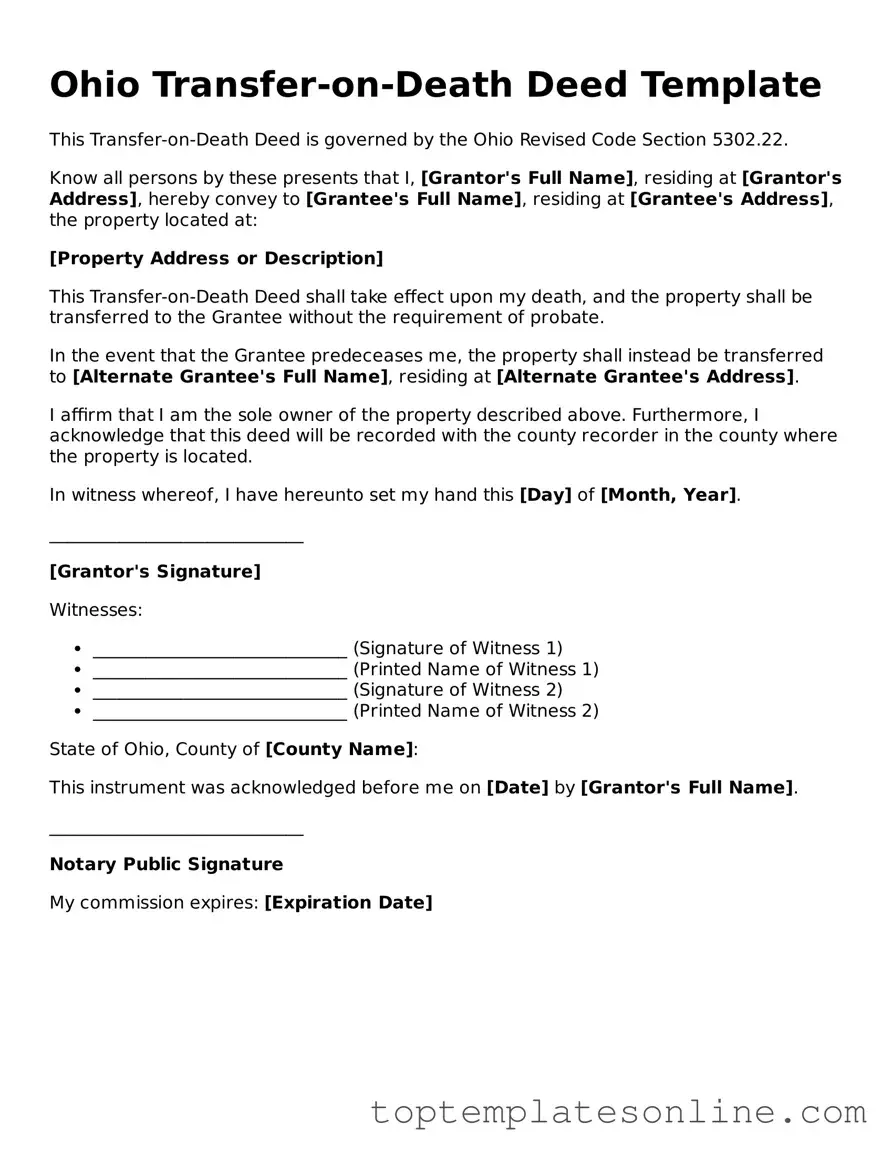Blank Transfer-on-Death Deed Template for Ohio State
The Ohio Transfer-on-Death Deed form allows property owners to designate a beneficiary who will automatically receive the property upon the owner's death, bypassing probate. This legal instrument provides a straightforward way to transfer real estate, ensuring that the owner's wishes are honored without the complexities of court proceedings. Understanding how to properly complete and file this form can significantly simplify estate planning in Ohio.
Customize Transfer-on-Death Deed Here
